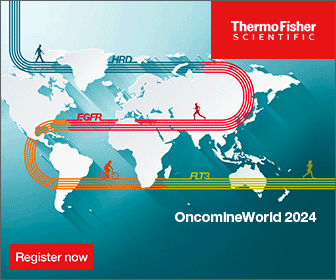Astellas Reveals Early Safety Data of Gene Therapy for Pompe Disease
Astellas is breathing a sigh of relief after its gene therapy for Pompe disease, AT845, cleared its first safety hurdle. At the 18th annual WORLDSymposium, the Japanese pharma presented interim data of FORTIS, a Phase 1/2 study assessing the tolerability and safety of its adenovirus-associated vector (AAV) gene therapy in late-onset Pompe disease (LOPD).
An Inherited Disorder Caused by Glycogen Buildup
Pompe disease is a rare inherited metabolic disorder caused by a mutation in the alpha-glucosidase (GAA) gene that encodes a protein responsible for metabolizing glycogen. Dysfunction of the GAA protein leads to accumulation of glycogen in organs and tissues such as the muscles, impairing their ability to function normally.
People with the late-onset form of the disease experience progressive muscle weakness, which includes muscles that control breathing. As LOPD progresses, breathing problems may eventually result in respiratory failure.
The only approved treatment for the disease is enzyme replacement therapy (ERT), administered as biweekly intravenous infusions. The treatment has its disadvantages – it relies solely on tissue uptake of GAA from plasma, and may be immunogenic, meaning the immune system develops neutralizing antibodies against the ERT.
Related Article: Astellas Taps Dyno in $1.6+ Billion Deal to Develop AAV Gene Therapies
Early Safety Profile of AT845
AT845 is designed to restore the function of GAA, by delivering a functional copy of the gene to express acid GAA in muscle cells. It is delivered into the tissues affected by LOPD via an AAV8 capsid.
Weston Miller, Senior Medical Director of Clinical Development at Astellas Gene Therapies, said AT845 has been well-tolerated in four treated adults with LOPD. Two of the participants were dosed at 3 x 1013 vg/kg (Cohort 1), while the other two were dosed at 6 x 1013 vg/kg (Cohort 2).
“In the two participants in Cohort 1 with follow-up duration through week 24 after dosing, AT845 demonstrated an encouraging safety profile,” he said.
Miller added that no serious adverse events were reported so far in the four participants at the time of the data cut. However, one participant experienced “elevated transaminase”, which is considered a common immune-mediated treatment response. The side effects were treated with steroids.
The program will continue to enroll participants, Miller said.
Related Article: Takeda Inks $3.6 Billion Deal with Poseida to Advance Non-Viral Gene Therapies and Overcome Safety Issues
Safety Issues in Another Trial
While the early safety data of AT845 is positive, Astellas is not in the clear yet. AT845 uses the same AAV8 vector as the troubled AT132, a gene therapy for X-linked myotubular myopathy (XLMTM), which was put on clinical hold by Astellas after the death of four patients in its ASPIRO study. The patient deaths followed complications with sepsis and bleeding in the gastrointestinal tract, which were linked to liver damage.
However, AT845 carries a different gene and has slightly different promoters from AT132. Astellas, investigating the issues of the ASPIRO trial, has said that new findings on XLMTM suggested that patients with the disease had an abnormal tendency to develop cholestasis, or an interruption to bile flow, which the gene therapy exacerbated.
©www.geneonline.com All rights reserved. Collaborate with us: service@geneonlineasia.com






